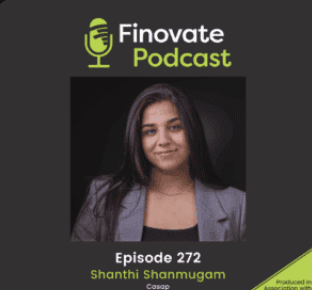
The International Organization of Securities Commissions (IOSCO) is out with a new report that highlights both the promise and the potential hazards of the tokenization of financial assets.
In a world in which stablecoins have increasingly defined innovation in the cryptocurrency/blockchain space, tokenization of financial assets is seen by some as the Next Big Thing in decentralized finance. Tokenization of financial assets refers to the process of representing ownership of a traditional financial asset, such as a share of stock or a bond, as a digital token on a distributed ledger or blockchain. Importantly, although tokenized assets can be transferred, traded, or exchanged between parties electronically, these assets are not cryptocurrencies—they are digital representations of regulated financial assets.
Valued for their ability to bring greater efficiency to the payments process—as well as their transparency, programmability, and potential to support financial inclusion via fractionalization—tokenized financial assets remain a new feature on the financial services scene. As such, there are myriad questions about how they can and should be used, as well as how they should be regulated. In their recent report, IOSCO, via its Fintech Task Force (FTF) and Financial Asset Tokenization Working Group (TWG) raised a number of these questions.
“The analysis shows that the majority of risks arising from the current commercial application of tokenization fall into existing risk taxonomies,” the report reads in its Executive Summary. “Market participants are not unfamiliar with managing such risk types. However, the manifestation of vulnerabilities and risks that are unique to the technology itself may require the introduction of new or additional controls to manage them.”
Here are three top takeaways from the IOSCO report on the tokenization of financial assets.
Legal Uncertainty and Ownership Rights
The biggest concern expressed in the report is the idea that there remains significant legal ambiguity about the tokenization of financial assets. This includes questions about the rights of ownership, transferability, and enforceability of claims.
“While there are currently well-established legal frameworks and structures for the treatment of financial assets created in paper certificate or book-entry form,” the report observes. “It can be unclear whether the existing legal treatment … applies to those created or represented in the form of tokens.”
In the absence of greater clarity on these legal framework issues, investors may find themselves unable to price or trade tokenized financial assets with confidence. This, at a minimum, can create asymmetry between investor expectations and outcomes and, at a maximum, contribute to more systemic uncertainty and challenges.
Infrastructure Risks and Operational Vulnerabilities
The second major risk discussed in the IOSCO report has to do with infrastructure risk, and the concerns range from the operational to the malicious. In either case, however, a major event that exposes these technical vulnerabilities could result in assets becoming permanently lost or cause an even wider market disruption.
Much of this concern is related to the relative newness of distributed ledger technology, as well as to some unique aspects of the technology compared to what is found in traditional financial markets. One example is the potential loss of a private key in a token structure, a phenomenon that does not exist in the world of traditional finance. The loss of a private key, which represents a sort of digital signature or ownership credential, would effectively result in the loss of access to the asset. To that end, a stolen private key would enable a criminal to steal the victim’s tokens.
“These assets face operational vulnerabilities and risks unique to this infrastructure, including cyber-attacks on blockchain nodes, congestion in transaction processing, data leakage, market fragmentation, smart contract bugs, and loss of private keys,” the report explains. “As tokenization scales up, regulators should also be cognizant of possible changes in market activities and market structure.”
Market Interconnectedness and Systemic Risk
A third concern is the creation of new dependencies and greater interconnectedness between market participants that is likely to happen as tokenization of financial assets scales. There are two versions of this. As an example of the first version, the report notes that a critical failure of a shared infrastructure, with multiple financial institutions tokenizing assets on the same blockchain network, could impact all tokenized assets on the network, rendering them temporarily or even permanently inaccessible.
Another example of the potential interconnectedness challenge arises as tokenized financial assets are increasingly used as collateral in cryptocurrency markets or as part of a stablecoin reserve. Here, the concern is that a crisis in the cryptocurrency markets such as a major or sustained stablecoin depeg could affect tokenized money market funds or government bonds being used as backing assets. The impact could readily spread to institutional investors with tokenized holdings, who would become involuntarily exposed to the heightened volatility of the crypto market.
Innovating for Known Unknowns
The quote from the report’s executive summary helps keep these and other concerns raised in the report in the proper context. While some challenges are more daunting, others more likely represent the kind of technological gauntlet that any product, service, or network must overcome as it scales. “Such risks and controls have been acknowledged by issuers and operators,” the report itself notes. That said, clear legal frameworks will be essential for addressing the broader challenges facing tokenized financial assets and unlocking their potential benefits.




























